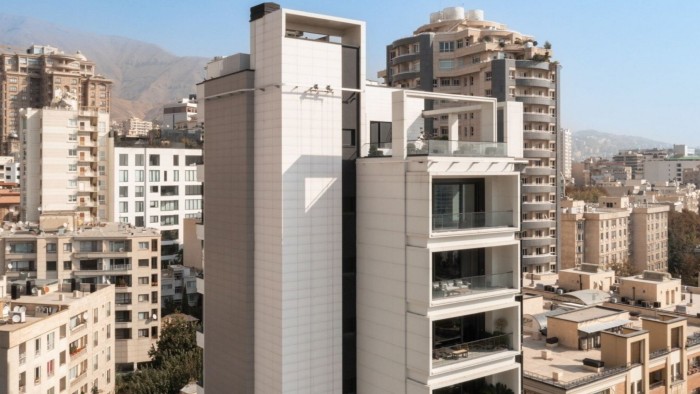Unlock the Editor’s Digest for free
Roula Khalaf, Editor of the FT, selects her favourite stories in this weekly newsletter.
Tehran is opening its curtains. After decades of architectural opacity, Iranians are embracing a bold new trend: apartments featuring expansive, floor-to-ceiling glass windows in living rooms, bedrooms and even kitchens. This emerging aesthetic reflects more than just a preference for modern design; it signals societal change in a country traditionally shaped by privacy, modesty and the watchful eye of neighbours and the state.
On a recent flat-hunting journey across Tehran, the transformation was unmistakable. Advertisements for new buildings showcase vast windows and balconies designed for relaxation. It is a far cry from my first apartment search in 2008. Back then, large windows were not common and balconies were strictly functional — used for drying laundry or storing seasonal fruits and vegetables. More importantly, single living raised eyebrows and landlords often asked intrusive questions about my personal life.
Today, living alone is no longer unusual. It comes with a cultural shift embodied by unapologetically transparent designs. Tehran’s glass architecture is not just a matter of changing taste. Open facades symbolise a yearning for transparency. In a society where private freedoms have long flourished behind closed doors, the shift suggests that boundaries between personal and public lives are quietly dissolving.
Iranians have been carefully curating this divide since the Islamic republic’s rule began in 1979. The strict mandates of the theocracy required a facade of conformity. Behind closed doors, however, homes were sanctuaries for freer expression. Mixed-gender gatherings and alcohol consumption flourished in spaces shielded by thick curtains.
The rise of glass-fronted apartments changes this. Apart from the influence of global trends accessed through social media and an emerging cohort of young architects, the shift is also driven by wealthy Iranians who travel frequently to cosmopolitan hubs such as Dubai and Toronto. These individuals, many of whom are affiliates of Iran’s political and economic elite, want to introduce a globalised lifestyle to Tehran. Their influence — which many resent as corruption of the privileged — help normalise practices once considered taboo.
Tehran’s affluent northern and western neighbourhoods feature the most luxury towers designed for western-style living. These buildings boast sprawling apartments with en suite or “infinity” pools, expansive balconies with Jacuzzis and rooftop gardens. Such features cater to a lifestyle of social gatherings and leisure seen in Hollywood movies — one that stands in stark contrast to the austere ideals of the Islamic republic.
A diplomat I spoke to, also in the midst of a real estate search, remarked on how Tehran’s luxury market offers a window into Iran’s evolving society. They were astonished not only by the staggering prices — $10mn for a 500-square-metre flat, for instance — but by the sheer number of these high-end properties. An Iranian visitor from Los Angeles joked that such sums could buy mansions in Beverly Hills.
This burgeoning luxury sector also underscores Tehran’s deepening inequality. For every glass-walled penthouse, countless young, educated Iranians are struggling to afford even modest housing. Inflation, a stagnant job market and a depreciating currency have eroded purchasing power. Renting a modern mid-range apartment is increasingly out of reach for many, let alone buying one.
While the glass-walled towers symbolise a break from conservatism, they also highlight the ever widening gap between Tehran’s haves and have-nots. For many locals, the transparency of these modern designs only serves to accentuate barriers between those who can afford such lifestyles and those left behind in a faltering economy hard hit by US sanctions.
Tehran’s new architecture reveals a city in flux, balancing dreams of modernity with the harsh realities of inequality. Behind the shimmering glass walls lie a complex narrative of aspiration and division. It is the tale of a society set on transformation and constrained by its own contradictions.
Read the full article here

